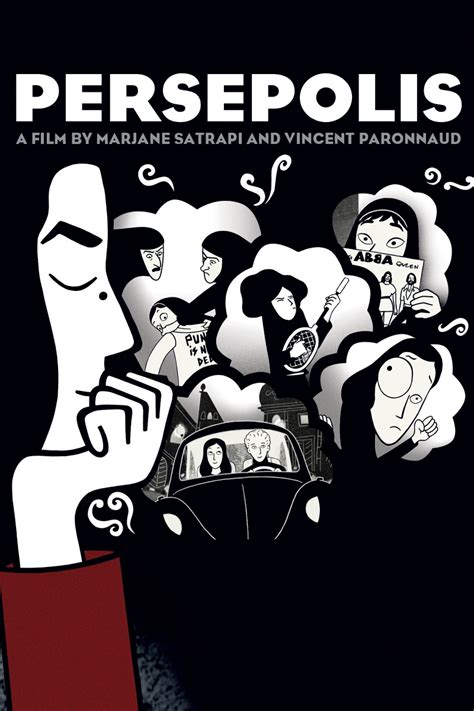Persepolis
directed by: Marjane Satrapi, year: 2007
actors: Chiara Mastroianni, Catherine Deneuve, Danielle Darrieux
actors: Chiara Mastroianni, Catherine Deneuve, Danielle Darrieux

Description:
Persepolis is an autobiographical animated film that follows the life of Marjane Satrapi from her childhood in Iran during and after the Islamic Revolution to her early adult years in Europe. The movie explores themes of identity, cultural expectations, and rebellion against oppression. Through visually striking black-and-white animation, it presents a deeply personal narrative that reflects the challenges of growing up amidst political turmoil and societal change.Keywords:
Animation, Biography, Drama, Cultural Expectations, Coming Of AgeWhy was Persepolis controversial?
"Persepolis," based on Marjane Satrapi's graphic novel, was controversial for its portrayal of the Islamic Revolution in Iran and the impact it had on personal and societal freedoms. Critics raised concerns about its frank depiction of political repression, war, and the struggles of women under the regime. Additionally, some religious and political groups objected to its critical perspective on Islamic fundamentalism and the depiction of cultural and political issues, leading to bans and censorship in certain countries.
Is Persepolis a good movie?
"Persepolis" is widely regarded as a good movie, praised for its unique animation style and poignant storytelling. Adapted from Marjane Satrapi's graphic novel, it explores themes of identity, war, and cultural displacement through the eyes of a young Iranian girl. The film's blend of humor and heartbreak effectively conveys the complexities of growing up during the Iranian Revolution. Its critical acclaim includes an Academy Award nomination for Best Animated Feature, making it a significant work in both animation and cinema that resonates with audiences worldwide.
Is Persepolis the movie based on a true story?
Yes, "Persepolis" is based on a true story. It is an animated film adapted from Marjane Satrapi's graphic memoir of the same name. The film chronicles Satrapi's childhood and early adulthood in Iran during and after the Islamic Revolution, highlighting her experiences with cultural identity, political upheaval, and personal growth. It combines elements of autobiography and historical events, providing a poignant and insightful look into life in Iran from a young girl's perspective.
Is the Persepolis movie similar to the book?
Yes, the movie "Persepolis" closely follows the narrative and themes of Marjane Satrapi's graphic novel. Both the film and the book depict Satrapi's childhood and early adulthood in Iran during and after the Islamic Revolution, highlighting her experiences with identity, culture, and exile. The film uses a striking black-and-white animation style that mirrors the graphic novel's visuals. While some details are condensed or altered for cinematic pacing, the core messages and emotional depth remain faithful to the original story.
Explore More Categories:
Human Rights Emotional Illusion Experiment Corporate Basketball Interviews Quarter Life Crisis Performance Disconnection Wildlife Entrepreneurship Time Travel Financial Crisis Herbert West Transformation Knighthood Tradition Practical Effects Remake Anxiety Social Change 1960s Everyday Life Mammoths